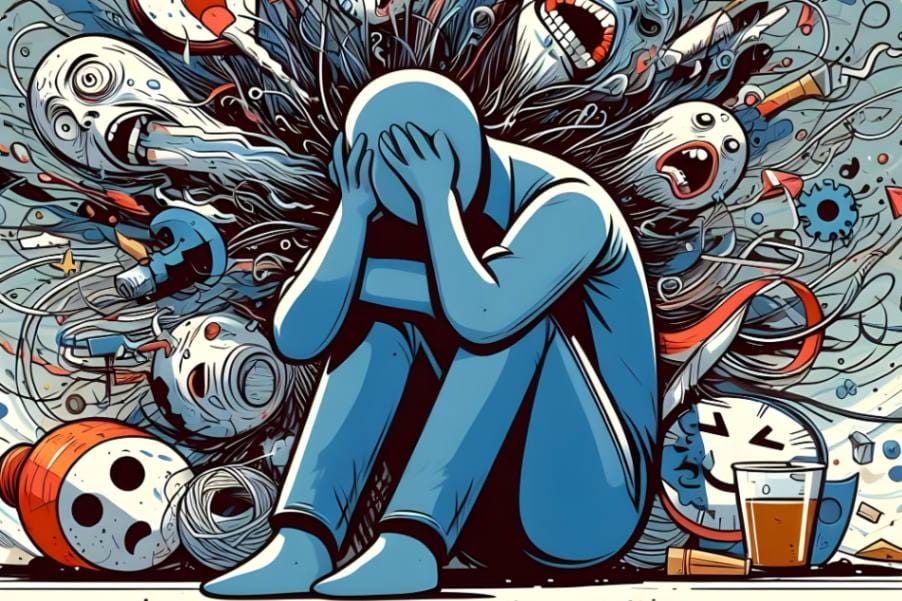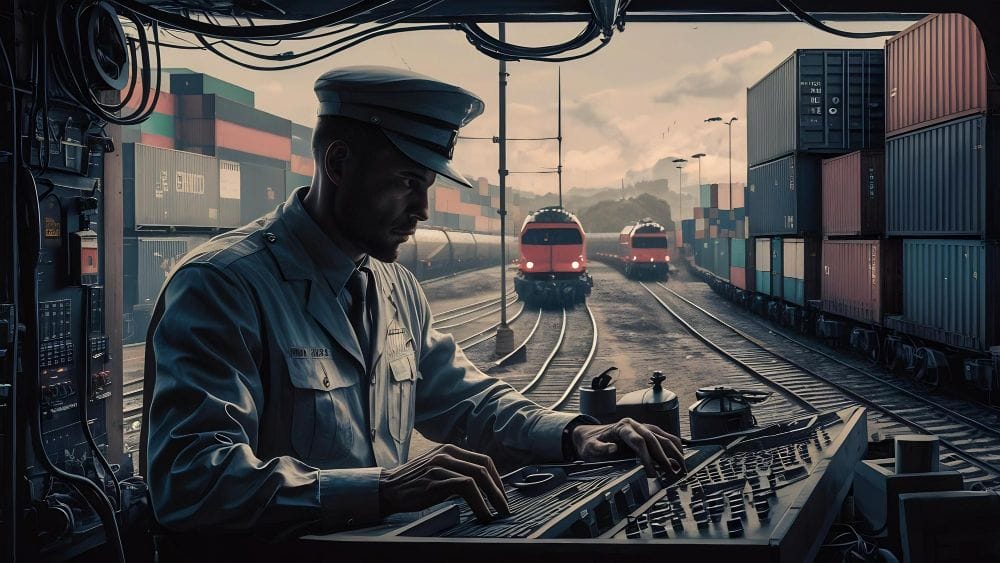The latest announcement on Australia’s unemployment rate has sparked a flurry of reactions across the country. It’s a hot topic, and for good reason. Understanding the intricacies of these numbers can be a bit like navigating a maze – confusing and overwhelming. But don’t worry, we’re here to break it down for you in a simple, engaging way. So, grab a coffee, sit back, and let’s dive into the details.
Introduction
Unemployment rates are like a thermometer for the economy, giving us a quick read on how hot or cold the job market is. When the rates drop, it feels like a warm breeze of optimism. But when they rise, it’s like a cold front of worry sweeping through. Australia’s latest unemployment figures have just been released, and there’s a lot to unpack. Let’s explore what these numbers mean and why they matter.

What is the Unemployment Rate?
Before we dive into the specifics, let’s clarify what we mean by the unemployment rate. Simply put, it’s the percentage of the labor force that is jobless and actively seeking employment. Think of it as a snapshot of the job market’s health. When more people are unemployed, it indicates that the economy isn’t creating enough jobs, or the jobs available don’t match the skills of the workforce. This rate is a critical indicator that influences government policy, business decisions, and even personal choices about career and education.
The Latest Numbers
The Current Rate
Australia’s unemployment rate currently stands at 5.4%, up from 5.2% in the previous month. At first glance, a 0.2% increase might not seem like much, but it represents thousands of individuals struggling to find work. That’s a significant number of families feeling the pinch. This rise is particularly concerning given the context of ongoing economic recovery efforts following the disruptions caused by the global pandemic. For many, this increase feels like a step backward just as they were beginning to see a light at the end of the tunnel.
Monthly Changes
The monthly change in unemployment rates can feel like riding a rollercoaster. One month you’re up, the next you’re down. This recent rise has caught many off guard, especially with expectations leaning towards a stable or even improving job market. Economists and analysts had hoped that the steady reopening of businesses and easing of restrictions would lead to a more consistent decline in unemployment. Instead, the data suggests that the recovery is more fragile than anticipated, with certain sectors still grappling with the aftershocks of the pandemic.
Yearly Trends
When we zoom out and look at the yearly trends, we see a more nuanced picture. Over the past year, the unemployment rate has been on a gradual decline, which is generally a positive sign. However, the recent uptick is a stark reminder that the road to economic recovery is rarely a straight line. It’s more of a winding path with unexpected twists and turns. Yearly trends show us that while progress is being made, it’s not immune to setbacks. This fluctuation highlights the complexity of the labor market and the multitude of factors that can influence employment levels.
Factors Contributing to the Change
Economic Slowdown
One of the primary culprits behind the rising unemployment rate is the economic slowdown. With global uncertainties and domestic challenges, businesses are treading cautiously. It’s like driving with one foot on the brake – progress is slow, and job creation suffers. Various factors contribute to this slowdown, including geopolitical tensions, supply chain disruptions, and inflationary pressures. Businesses, facing an unpredictable environment, are hesitant to expand their workforce, leading to fewer job opportunities for job seekers.
Job Market Saturation
Another factor is job market saturation. Certain sectors are simply not hiring at the same pace they used to. When everyone is fishing in the same pond, catching a fish (or a job) becomes increasingly difficult. Industries like retail and hospitality, which traditionally employed a significant portion of the workforce, are now struggling with reduced demand and changing consumer behaviors. This saturation leads to increased competition for the limited number of available positions, making it harder for job seekers to secure employment.
Technological Advancements
Technological advancements, while beneficial in many ways, are also contributing to unemployment. Automation and AI are replacing jobs faster than new ones can be created. It’s like a game of musical chairs, and there aren’t enough seats for everyone. While technology can lead to greater efficiency and productivity, it also displaces workers who may not have the skills needed for the new job landscape. This shift necessitates a focus on retraining and upskilling to help displaced workers transition to new roles.
Impact on Different Sectors
Retail and Hospitality
The retail and hospitality sectors have been hit particularly hard. With consumers tightening their belts and tourism still recovering, job opportunities in these areas are dwindling. It’s a tough pill to swallow for many who rely on these industries. The pandemic significantly altered consumer behavior, leading to a surge in online shopping and a decline in brick-and-mortar retail. Similarly, travel restrictions and health concerns have dampened tourism, affecting hotels, restaurants, and other hospitality businesses.
Manufacturing
Manufacturing is another sector feeling the strain. Global supply chain disruptions and rising costs are leading to cutbacks. Workers in this field are finding themselves at a crossroads, needing to adapt or face prolonged joblessness. The shift towards more automated and technology-driven manufacturing processes also means that traditional manufacturing jobs are becoming scarcer. Workers need to acquire new skills to remain relevant in this evolving industry.
Healthcare
On the flip side, the healthcare sector remains a beacon of hope. With an aging population and ongoing health challenges, demand for healthcare professionals continues to grow. However, this doesn’t offset the losses in other sectors. The healthcare industry is expanding, but it requires specific skills and qualifications that not all displaced workers possess. This sector’s growth underscores the importance of aligning workforce skills with market demands to mitigate unemployment.
Regional Disparities
Urban vs. Rural
There’s a stark contrast between urban and rural unemployment rates. Cities, with their diverse economies, tend to fare better. In contrast, rural areas, which often rely on a limited number of industries, face higher unemployment rates. Urban areas benefit from a concentration of businesses, services, and industries that provide a wide range of employment opportunities. Rural regions, on the other hand, may depend heavily on agriculture or mining, making them more vulnerable to economic market fluctuations and job losses in these sectors.
State Variations
Different states also show varying unemployment rates. States heavily dependent on tourism, like Queensland, are struggling more compared to those with diversified economies like Victoria and New South Wales. It’s like comparing apples to oranges – each state has its unique challenges and strengths. Queensland’s reliance on tourism means that any downturn in this industry has a pronounced impact on employment rates. Meanwhile, states with more diversified economies can better absorb shocks to specific sectors, leading to more stable employment levels.
Government Response
Policy Measures
In response to the rising unemployment rate, the government has rolled out several policy measures. These include stimulus packages, job creation programs, and support for small businesses. It’s a bit like putting a band-aid on a wound – it helps, but it’s not a permanent solution. Stimulus packages aim to boost economic activity and create jobs, but their effectiveness depends on the underlying health of the economy and the specific needs of different sectors. Job creation programs target areas with high unemployment, offering incentives for businesses to hire and train workers.
Support for Job Seekers
There’s also a focus on supporting job seekers through retraining and upskilling programs. The idea is to equip people with the skills needed for the jobs of the future. It’s akin to teaching someone to fish rather than giving them a fish – empowering them to secure their livelihoods. These programs are crucial for helping displaced workers transition to new roles, particularly in sectors like technology and healthcare, where demand is growing. By providing training and education, the government aims to reduce long-term unemployment and create a more adaptable workforce.
The Role of Education and Training
Upskilling Initiatives
Upskilling initiatives are crucial in this changing job market. Programs designed to teach new skills, especially in tech and healthcare, are gaining popularity. It’s about staying ahead of the curve and not getting left behind. These initiatives focus on equipping workers with the competencies needed for emerging industries, ensuring they can compete in the evolving job market. By investing in upskilling, workers can transition to new roles and industries, reducing the risk of long-term unemployment.
Vocational Training
Vocational training is also receiving a lot of attention. Hands-on skills and practical knowledge are invaluable, particularly in trades and technical fields. These programs are like lifeboats, offering a way out for those struggling to stay afloat in the job market. Vocational training provides targeted education and training for specific careers, ensuring that workers have the practical skills needed for immediate employment. This type of training is essential for filling gaps in industries like construction, manufacturing, and healthcare, where skilled workers are in high demand.
The Psychological Impact
Stress and Anxiety
Unemployment isn’t just a financial issue; it’s an emotional one too. The stress and anxiety that come with joblessness can be overwhelming. It’s like carrying a heavy backpack – the longer you carry it, the harder it gets. Prolonged unemployment can lead to feelings of hopelessness and depression, affecting mental health and overall well-being. The uncertainty of not knowing when or if one will find a job adds to the stress, making it difficult to stay positive and motivated.
Family Dynamics
Families also feel the strain. Tensions rise, and relationships can suffer. The ripple effects of unemployment extend far beyond the individual, impacting entire households. Financial stress can lead to conflicts and strains within families, affecting relationships and overall family dynamics. Children, in particular, may feel the impact as parents struggle to provide for their needs and maintain a stable home environment. The psychological toll of unemployment can lead to a cycle of stress and anxiety that is difficult to break.
Looking Ahead: Predictions and Expectations
Short-Term Forecast
In the short term, the unemployment rate may continue to fluctuate. Economic uncertainties and global events will play significant roles. It’s like trying to predict the weather – there are so many variables at play. Factors such as government policies, consumer confidence, and global economic trends will influence short-term employment levels. While some sectors may see improvements, others may continue to struggle, leading to an overall unpredictable job market.
Long-Term Outlook
The long-term outlook, however, is more optimistic. With the right policies and a focus on innovation and education, Australia can turn the tide. It’s a marathon, not a sprint, and resilience will be key. Investing in education, training, and job creation programs can help build a more robust and adaptable workforce. By fostering innovation and supporting emerging industries, Australia can create sustainable employment opportunities that drive long-term economic growth. The road to recovery will be challenging, but with a strategic and proactive approach, the country can overcome these hurdles and build a stronger, more resilient economy.
Conclusion
The latest unemployment rate announcement is a wake-up call. It highlights the fragility of our job market and the need for proactive measures. While the numbers can seem daunting, understanding the factors at play helps us navigate this complex landscape. By staying informed and adaptable, we can weather this storm and emerge stronger. It’s essential for policymakers, businesses, and individuals to work together to address the root causes of unemployment and create a more resilient and inclusive economy. With a collective effort and a focus on long-term solutions, we can overcome the challenges and build a brighter future for all Australians.
FAQs
1. What is the current unemployment rate in Australia?
The current unemployment rate in Australia stands at 5.4%.
2. Why did the unemployment rate increase recently?
The recent increase in the unemployment rate is due to factors like economic slowdown, job market saturation, and technological advancements.
3. Which sectors are most affected by unemployment?
Retail, hospitality, and manufacturing sectors are most affected, while the healthcare sector continues to grow.
4. How are different regions in Australia affected by unemployment?
Urban areas tend to have lower unemployment rates compared to rural areas. States dependent on tourism, like Queensland, face higher unemployment rates.
5. What is the government doing to address unemployment?
The government has introduced policy measures such as stimulus packages, job creation programs, and support for small businesses, along with upskilling and vocational training initiatives for job seekers.







